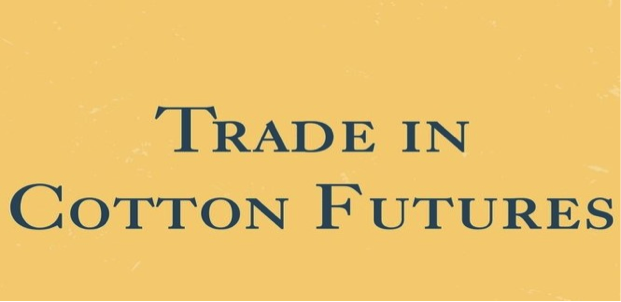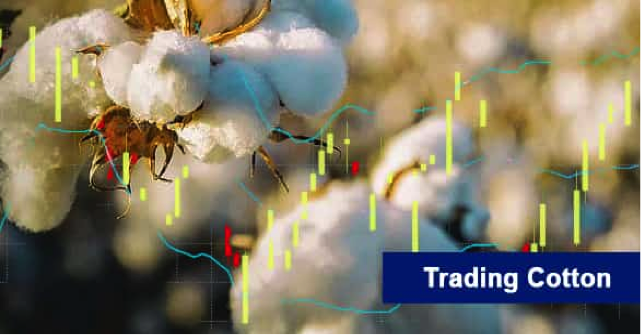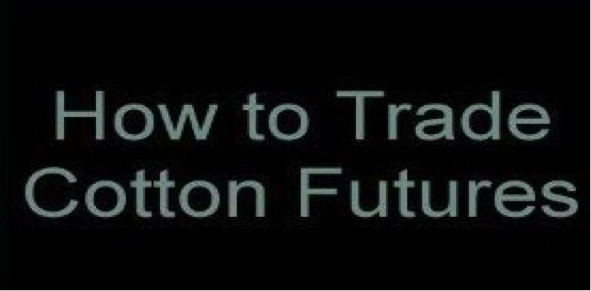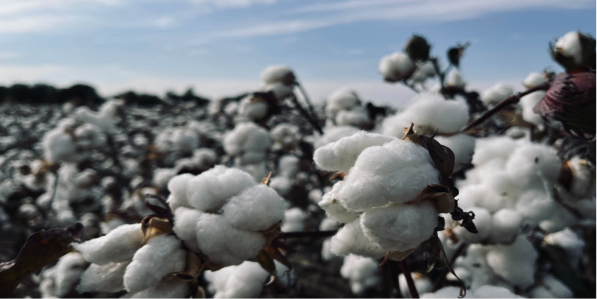
Also Read: How to Trade Futures – A Beginner’s Guide
Contents
- What are Cotton Futures?
- The Background of Cotton Futures
- Why Trade Natural Gas Futures?
- Why Trade Cotton Futures?
- How to Trade Cotton Futures?
- Benefits and Risks of Trading Cotton Futures
- Cotton Futures Contract Specifications
- What is Nasdaq?
- Current Market Data for Cotton Futures
- Trending Commodities in the Financial Markets
- Final Verdict
- FAQs
What are Cotton Futures?
Cotton futures are standardized contracts that involve an exchange-traded transaction between a buyer and a seller. It involves the trading in which a contract buyer accepts a specific quantity of cotton usually ranging around 50000 pounds, and sold by the seller at a predetermined price on future delivery date.

Cotton producers make use of a short hedge lock when locking in selling prices for the cotton produced while buyers, particularly businesses employ a long hedge when securing a purchase price for the commodity they need.
Cotton futures can be used as financial instruments in which speculators can buy these commodities whenever charts show that the market would go up and similarly, sell cotton futures if there are risks that the prices would fall.
The Background of Cotton Futures
Cotton futures contracts (CT) are not constant. They have been altering over the past years. This can mostly be attributed to the fact that cotton is different from other commodity crops. For instance, other commodity crops like coffee usually have more specific land characteristics for it to grow. However, this doesn't apply to cotton because it can grow practically anywhere it has the requisite or preconditioned 200 free frost days and a basic water supply.
As a result of this, the fluctuation of cotton futures price would persist because the distinct feature of cotton as mentioned above, favours growths from country to nation, and additionally leads to the development of more technologies aiding cotton manufacturing, marketing, and its genetic structure.
Why Trade Natural Gas Futures?
It is necessary to trade natural gas futures and options because they make investing easy and provide a convenient way for investors can participate in the energy market whilst simultaneously aiding the trade of futures thereby aiding participation in an essential energy market.
Natural gas futures and options can be used by any company involved in the exploration, production of natural gas and basic consumers of energy to hedge their price risk.
By hedging price risks, we mean critically using financial instruments or market data to offset risks that could occur due to adverse price movements.
In simpler terms, it means balancing possible losses or profits that could occur when a company invests.
Natural gas futures can predict volatile price swings thereby attracting speculators in various markets seeking to gain on large price moves.
Why Trade Cotton Futures?
As earlier established, Cotton is regarded as one of the most valuable commodity crops to be produced in the twentieth century. It is also currently being used to produce various products across the country. Due to this, cotton manufacturers have resulted in selling cotton futures to manage risks.

Producers often hedge to lock in a selling price while speculators, businesses, or investors hedge to secure a purchase price.
Usually, speculators or investors try to predict the price movement of cotton through buying cotton futures when they speculate that the price will go up and selling when forecasts show that the prices would go low.
Asides from this, speculators also consider weather conditions, global stockpiling, and economic health when investing because they sometimes indicate the likelihood of high demand for cotton.
How to Trade Cotton Futures?

Cotton future trading can be carried out on the Intercontinental Exchange, (commonly called ICE) trading system which is the centre for global trading in soft commodities. They are also available for trading electronically on a website known as Schwab; however, to start trading, traders must open an account and wait for approval before trade can begin for cotton futures.
Also Read: Futures Trading Strategies You Can Try
Benefits and Risks of Trading Cotton Futures
Cotton futures have their benefits and risks. It is always fundamental to consider both benefits and risks associated with trading cotton futures before diving into the market.
A major benefit of trading cotton futures is that it provides the opportunity to trade with more leverage whilst simultaneously ensuring more efficient use of the trading capital.

The risk with trading cotton futures however is that when losses occur, it can exceed the amount that was originally invested which may not be suitable for speculators looking to invest.
Cotton Futures Contract Specifications
The question you're probably pondering about is if cotton is a viable option to trade. Yes, it is but you can't start without the basic knowledge required for trading this commodity. You must know the cotton futures contract specifications before you consider trading.
Product Name- Cotton
Product code/ Base symbol – CT
Means of Exchange/Exchange Platform – The appropriate means of exchange is Intercontinental Exchange, ICE
Contract size- 50,000 pounds
Minimum Tick, Size, and Value- the minimum tick size is 0.01 and each contract is worth $5.00
Trading Times- cotton futures can be traded electronically on the ICE platform in real-time from 9.00 pm U.S Eastern Time to 2.00 pm U.S Eastern Time
Principal Trading Months- the principal months suitable for trading cotton futures and options are March, May, July, October, and December.
What is Nasdaq?
Nasdaq means National Association of Securities Dealers Automated Quotation. It is the world’s first electronic exchange that makes buying and selling securities online possible.
Nasdaq majorly operates three stock exchanges in the United States. It can also be referred to as a dealer market that provides an avenue for both buyers and sellers to trade with a market maker in a specific stock or security.
As regards cotton futures, you can get accurate information regarding the latest futures prices as well as recent news regarding the commodity market on Nasdaq.
Current Market Data for Cotton Futures
The current cotton features can be accessed on the New York Mercantile Exchange and Chicago Mercantile Exchange.
Currently, China and India are the leading producers of cotton in the world. They are followed by the United States, Pakistan, Brazil, Australia, and Uzbekistan, however, the United States is the biggest exporter of cotton with total export records of 40%.
The reason for the U.S having this high amount of exportation of cotton is that Cotton is the most widely used natural fiber in the world.
The current market value of Cotton can be displayed on the Trading Economics site. The prices tend to fluctuate and are based on over-the-counter (OTC) and contract for difference (CFD) financial instruments.
Trending Commodities in the Financial Markets
Asides from cotton futures, there are other trending commodities speculators can invest in. They include Lumber May 2022, Crude oil April 2022, Natural gas March 2022, Brent crude April 2022 although this data is not constant.
Final Verdict
Cotton futures are lucrative financial investments once you understand the market, benefits, and risks associated with this commodity.
Also, ensure to familiarize yourself with the trading sites mentioned above to explore the real time display of the market value of commodities. Stocks and options price changes constantly so make sure to stay updated and always add them to your watchlist.
Do not trade if you don’t fully understand the basics of the market such as the symbols, what the arrows and rows mean, and all cotton futures contract specifications.
FAQs
What is the best trading time for cotton futures?
Trading can be carried out on, ICE during the time frame of 9.00 to 2.00 pm. This time only applies to the U.S E.T as there are various trading times across the world, depending on the country.
What affects the price of cotton?
Cotton is a natural commodity affected by most weather conditions. This is because poor weather could lead to a shortage of cotton. Also, policies in the government could restrict the exportation of Cotton leading to limited cotton. For instance, the U.S restricted cotton exports from Tokyo because there was news of human rights abuse in the country.
How can you use hedging to reduce risk?
Hedging can be used to balance losses that occur when investing. It works by taking an opposite position in a related asset.

















